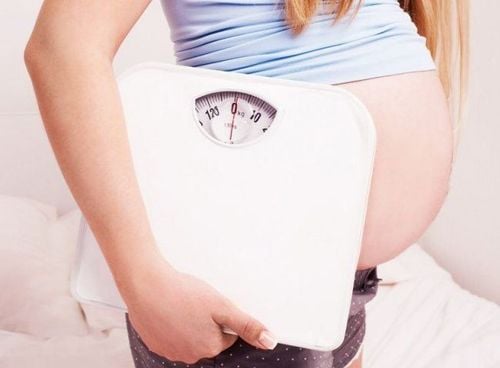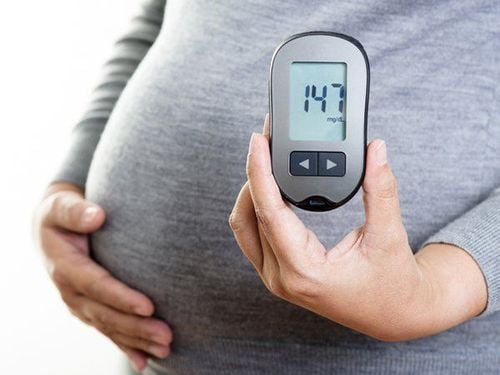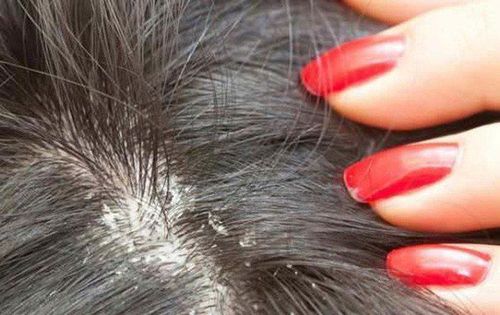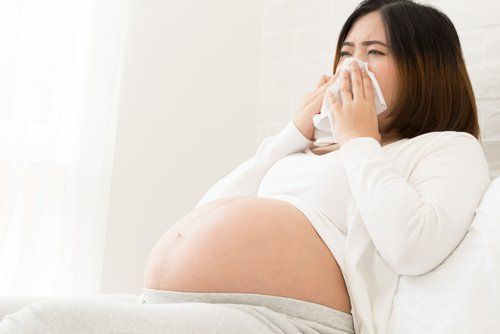The skin of pregnant women undergoes significant changes and is often stretched throughout pregnancy, leading to the appearance of stretch marks around the abdomen, hips, and thighs. However, with proper research and prevention, expectant mothers can completely prevent or help reduce the occurrence of stretch marks during pregnancy from the early days.
1. When Do Stretch Marks Appear During Pregnancy?
In order to enjoy the happiness of motherhood, a woman's body faces many health risks, including stretch marks during pregnancy, which are quite common and cause aesthetic concerns and anxiety for expectant mothers.
Stretch marks during pregnancy often appear when the mother's body weight increases faster than the elasticity of the abdominal skin. Most expectant mothers experience stretch marks on the chest and abdomen, followed by the arms, buttocks, or thighs. Depending on each person's skin type, the stretch marks may be purple or red, white, and gradually turn gray or black after childbirth.
Details about fetal development week by week that every parent should know:
- Most pregnant women are unaware of when stretch marks appear during pregnancy, as it varies depending on each individual's body. According to statistics, up to 90% of women experience stretch marks during the 6th to 7th month of pregnancy. These stretch marks tend to increase in size and number as the fetus grows and the mother gains weight rapidly.
- The color of stretch marks during pregnancy depends on each person's skin tone. For example, if the pregnant woman has fair skin, the stretch marks are usually pink, and if the skin is darker, the stretch marks are often lighter than their skin color.
2. Causes of Stretch Marks During Pregnancy
Not all women experience stretch marks during pregnancy. The cause of this condition is the result of the breakdown of collagen and the elastic layers of the tissue under the skin. The older the pregnant woman, the more severe the stretch marks, so age is also considered one of the factors that increase the occurrence of stretch marks during pregnancy. Carrying multiple babies can also cause stretch marks because the abdomen is larger, and the skin has to stretch more to create a comfortable space for the baby in the mother's womb. Additionally, stretch marks during pregnancy can also be caused by:
- Hormonal changes in the body: Usually, by the third month of pregnancy, the endocrine glands in the mother's body undergo significant changes. At this time, the fetus and placenta in the womb secrete a large amount of progesterone and estrogen hormones to strongly stimulate the formation of melanin precursor molecules, increasing skin pigmentation. This is why stretch marks during pregnancy form and begin to darken, and some mothers also develop dark spots.
- Rapid weight gain in Pregnant Women: The skin consists of three layers: the outer epidermis, the middle dermis, and the inner hypodermis. During pregnancy, the mother's body weight increases rapidly, causing the skin to stretch for a long time and gradually lose its elasticity. To help limit stretch marks, mothers should try to control their weight during pregnancy, gaining only a moderate amount, about 7-15 kg throughout the pregnancy.
- Genetics: The degree and timing of stretch marks during pregnancy depend on each mother's body. Those with a strong skin structure will be less prone to stretch marks. Additionally, stretch marks are also influenced by genetic factors.
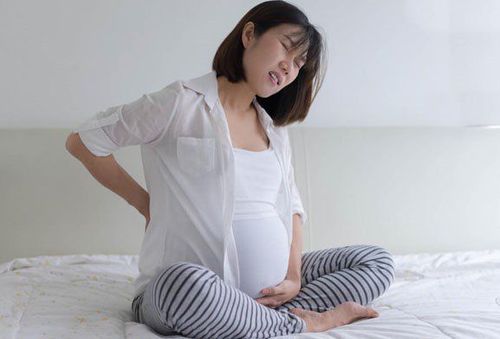
3. Who is more likely to get stretch marks during pregnancy?
The timing of stretch marks during pregnancy depends on many factors such as body type, genetics, and weight gain. Although it is a common phenomenon, not all expectant mothers are at risk of getting stretch marks during pregnancy. This explains why some people get stretch marks while others do not.
Expectant mothers whose mothers or sisters had stretch marks during pregnancy are more likely to get stretch marks themselves. Additionally, expectant mothers who are either very young (under 20) or older (over 35) are at higher risk of getting stretch marks because their skin is either not fully developed or has started to age. Those who had stretch marks during puberty are also more likely to experience them again during pregnancy.
Moreover, during pregnancy, mothers who take good care of their skin and ensure adequate nutrition will help their skin increase elasticity and avoid stretch marks.
4. How to prevent stretch marks during pregnancy?

Almost all expectant mothers will experience stretch marks during pregnancy; however, there are still many methods that can help limit the appearance of stretch marks and simultaneously fade them quickly after childbirth, such as:
- Build a diet that is good for the skin, improving elasticity, thereby preventing the appearance of stretch marks during pregnancy, such as strawberries, blueberries, spinach, foods rich in vitamin E, vitamin A, omega-3, omega-6...
- Drink plenty of water to help detoxify the body and keep skin cells soft and moist, thereby helping the skin stay healthy and helping stretchmarks during pregnancy disappear quickly after childbirth.
- Exercise regularly during pregnancy to help maintain skin elasticity by improving blood circulation and helping to maintain a reasonable weight. Expectant mothers should only perform exercises suitable for pregnant women, gentle and not too strenuous.
- Control weight reasonably.
- Be careful when choosing bath soaps, shampoos, or skincare products during pregnancy.
- Choose natural essential oils to nourish the skin and exfoliate.
- Use sunscreen when going outside, especially on the chest, face, and abdomen or areas prone to stretch marks.
Stretch marks during pregnancy usually appear around the second trimester. To minimize stretch marks, pregnant women should take preventive measures from the beginning of pregnancy. During this stage, pregnant women may not only experience stretch marks but also gestational diabetes, signs of preterm labor, and more. Therefore, during the second trimester, pregnant women should pay attention to:
- Comprehensive fetal anomaly screening using advanced 4D ultrasound technology.
- Screening for gestational diabetes to avoid dangerous complications for both mother and baby.
- Reasonable weight control to assess the health status of the pregnant woman and the development of the fetus.
- Understanding the signs of preterm labor (especially in those carrying multiple babies or with a history of miscarriage or preterm birth) to receive timely treatment to maintain the pregnancy.
To protect both mother and baby throughout the pregnancy, Vinmec offers a comprehensive maternity package that helps monitor the health of both mother and baby, with regular prenatal check-ups by leading obstetricians, complete important tests and screenings for pregnant women, and timely consultation and intervention when abnormalities in the health of mother and baby are detected.
For detailed information about the comprehensive maternity packages, customers can contact the hospitals and clinics in the Vinmec healthcare system nationwide.
To arrange an appointment, please call HOTLINE or make your reservation directly HERE. You may also download the MyVinmec app to schedule appointments faster and manage your reservations more conveniently.

